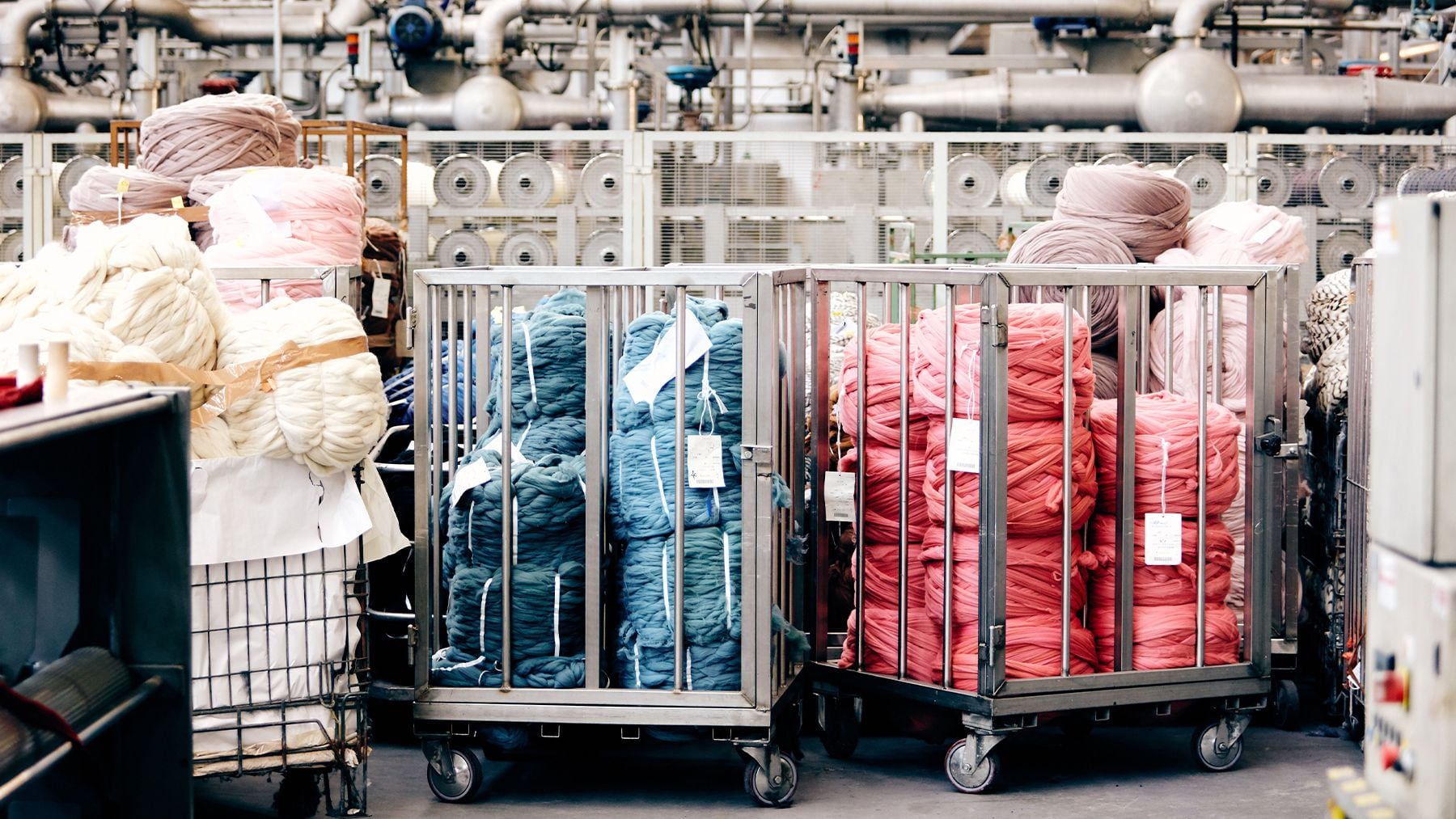
By 2030, many of the world’s largest fashion brands, from H&M Group to Gucci-owner Kering, have promised to halve planet-warming emissions across their supply chains, a costly endeavour that is increasingly underpinned by government regulation. But they’re going about it all wrong, according to a new report by denim industry trade group Transformers Foundation.
Most brands are simply passing the buck to suppliers, demanding they set their own targets and shoulder the substantial cost of decarbonisation, with little acknowledgement of structural challenges, pledges of financial support or regard for what might be possible in practice, the report found.
“Responsibility for climate action in fashion is not shared,” said Kim van der Weerd, intelligence director at Transformers Foundation. “This approach is not only inequitable, it’s also impracticable. It’s not feasible.”
“That’s why the title of this report is ‘Doomed to Fail.’ Because, of course, it is,” she said.
It’s an unusually blunt and public assessment of how suppliers view the current state of play. Conversations about efforts to curb fashion’s environmental impact have been dominated for years by Western brands, who stood to gain from marketing their efforts to consumers, investors and regulators. Suppliers, by contrast, have historically hesitated to voice concerns that could be seen as critical of their clients.
Though the report is based on interviews with denim manufacturers, the challenges they voice are faced by the whole industry. Interviewees include Indian manufacturing giant Shahi Exports and Austrian fibre producer Lenzing.
The findings cut to the heart of a long-standing debate over the issue of climate justice, an increasing focus of global climate talks. In the context of fashion, it speaks to the idea that big Western brands have accrued the financial benefits of climate destruction, but aren’t taking responsibility to clean up the mess.
Most of the industry’s environmental impact takes place in the supply chain during energy-intensive manufacturing processes like dyeing and finishing fabrics. Brands don’t own these suppliers, or typically even contract with them directly. But they do dictate the terms on which the business operates. And for decades that’s meant one thing above all else: low costs that leave suppliers little room for investment in more responsible business practices.
In other words, the pursuit of cheap production that has helped propel fashion’s growth has effectively offshored the industry’s climate challenges to countries like India, Bangladesh and Pakistan. And while brands are now pushing to address the issues their promotion of ever-faster and cheaper products have helped create, there’s little evidence brands are willing to pay a premium to help support delivering on their targets, suppliers say.
This dynamic is made even trickier because suppliers are often operating in countries where the cost of capital is high and access to climate finance is limited.
“There’s a huge gap in margins, in access to resources between brands and retailers and their suppliers,” said van der Weerd. “In practice suppliers are not only expected to do most of the work to decarbonise, but also to foot the bill for it.”
Though some low-hanging fruit offers environmental benefits at low costs that can drive efficiencies and quickly pay back investment, many more substantive efforts will take years to deliver returns, or never will, according to manufacturers interviewed for the Transformers Foundation report. The sums required to fully decarbonise the industry are eye popping: some trillion dollars by 2050, according to analysis by climate-finance initiative Apparel Impact Institute and innovation platform Fashion for Good.
To be sure, brands are looking at ways to open up more funding for supply chain decarbonisation projects, but from a low base. AII launched a fund last June aimed at raising $250 million (and unlocking another $2 billion) to support projects to reduce greenhouse gas emissions in the sector. So far it’s raised $70 million from a handful of brands and philanthropic organisations, including H&M Group, Lululemon and PVH. The grants available are small — up to $250,000 at most, a fraction of the millions typically needed for more substantive upgrades to eco-friendly equipment or energy supply, the report found. AII said it’s working on a strategy to activate further financing and engage more suppliers.
Perhaps even stickier than the question of finance is whether manufacturers really have access to workable solutions. Though technologies that improve energy efficiency or reduce temperatures required to process and finish fabrics are increasingly available, many of the world’s largest apparel manufacturing hubs still power their energy grids with coal, the world’s dirtiest fossil fuel. Renewable energy capacity is limited, and financial solutions that have allowed many brands to decarbonise their own operations by paying for renewable energy elsewhere when they can’t access it directly aren’t as available.
Sweeping targets imposed onto the industry by brands generally don’t take into account such structural challenges and nuance.
For instance, Pakistan-based denim manufacturer Artistic Milliners has said it is spending some $30 million on decarbonisation initiatives that include rooftop solar panels and upgrades to allow energy-intensive boilers to run on natural gas or biomass rather than coal. But the company’s renewable energy capacity isn’t enough to power its operations, and the switch from coal — also the world’s cheapest fossil fuel — means higher operating costs. The company has invested in wind farms to try and bridge the gap between its power needs and on-site renewable energy production, but there aren’t financial mechanisms in Pakistan that would allow it to take credit for the associated emissions savings.
The solutions, the report concludes, lie in much closer collaboration and collective action that share the burden of decarbonisation across the industry and acknowledge that these are investments to guarantee a future, rather than a return. It would be a radical restructuring, but without it, fashion’s climate commitments may amount to little more than empty promises.
“Climate action has to be our responsibility,” said van der Weerd. “It has to be our problem as opposed to a supplier burden.”



